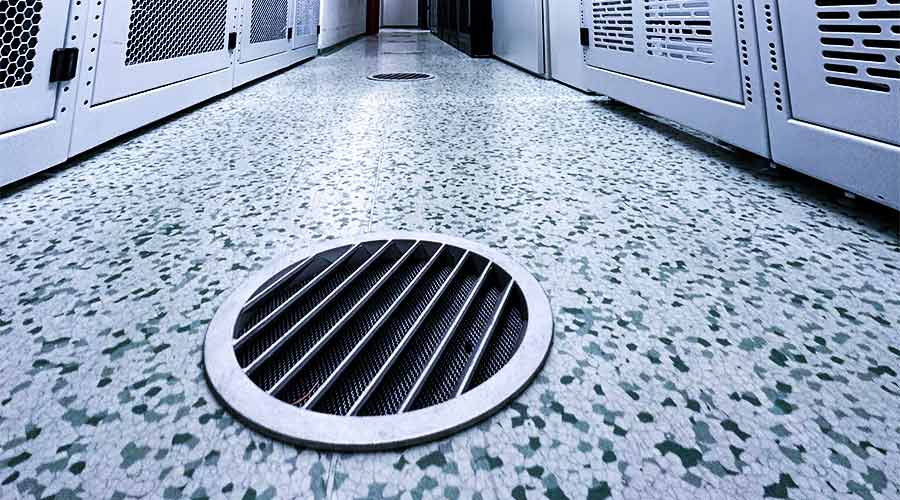Do you need a cable to connect a computer to your home network? In any supermarket you can buy regular RJ-45 connectors with ordinary twisted pair endings. However, for professional deployment, metallic conductors are not enough.
The market of optical fibre cables and active network elements is much more complicated than a standard twisted pair of category 5 or 6 with RJ-45 connectors for home and enterprise 100 MG and GB metallic networks. Manufacturers supply various types of optical fibres and a whole range of different types of connectors, which can be worked with more or less creatively, depending on momentary needs and of course also on the size of the budget.
Fibres and connectors
While metallic conductors use electric conducting for data transfer, optical fibres rely on light. Therefore, and not surprisingly, the material most often used for production of optical fibres is glass, specifically enriched silicate glass. A clear advantage of this material is that reserves of silica on our planet are practically endless, which cannot be said about copper or petroleum, from which a small quantity of optical fibres produced from plastic originate.
If we leave aside fibres for special purposes, there are two types of optical fibres that are used regularly. Multi-mode fibres are mostly used in local networks, and they are suitable for short distances of up to 600 metres and lower transfer speeds with minor problems of up to 10 Gb/s. Nowadays, gradient fibres, in which a light beam copies a sine curve, and in which a smooth change of light refraction occurs, are common. Single-mode fibres most often serve greater distances, including connections between continents, at a high speed in a series of up to terabits per second. They have a smaller core diameter, and so light refracts under large angles in them. The characteristics of these fibres make it possible to use wave multiplex.
The diameter of the core is one of the determining parameters of optical fibre cables, which is indicated by a number in the form of X/Y, such as 9/125. The first value gives the cross-section of the fibre itself, and the second gives the cross-section of the casing (the second layer from the core of the cable), which prevents light from escaping outside of the glass core. Both values are expressed in micrometres. Single-mode fibres have a core diameter of up to 10 micrometres, and multi-mode fibres have more, most often 50 or 62.5 micrometres.
We can differentiate among a whole series of types of connectors for connecting fibres to network elements. Only unidirectional communication (simplex) is enabled by, for example, ST and SC connectors, and for the bidirectional (duplex) mode, connectors are used, which pair two simplex cables in a single connector, such as types SC-RJ or very widespread LC. Other connectors are mounted onto cables containing more fibres.

But let’s return to the mentioned wave multiplex. This is a technology, which uses in a multiplex multiple optical signals in a single fibre, thanks to the use of various wavelengths (i.e. colours) of carrying light. In the Czech Republic, for example, we can see its deployment in practice in the connection between the data centers of Coolhousing on Vinohradská Street and CE Colo on Nad Elektrárnou Street. Data moves from Vinohradská along the main optical path. If it is directed to CE Colo, it turns via a detour to the relevant optical lines, where it is differentiated from other providers’ data by the colour of carrying light, before it reaches its destination. Therefore, wave multiplex enables effective sharing of capacity optical connections.
That is enough of the theory
One more look under the hood of the network administrators at Coolhousing will show us the extensive use of optical technology and even certain specialities far exceeding the brief explanation of optical technology contained in this article. Two independent optical paths run from the data center on Vinohradská Street. The main path consists of 96 single-mode 9/125 fibres. Coolhousing has 24 fibres mounted with LC/APC connectors, and another 24 LC and the remaining 48 are still awaiting use.
The back-up route is a multi-mode 50/125 ended with SC type connectors. A speciality is the use of conditioners, which are passive elements, in which the optical fibre is ruptured and under a precise angle a single-mode fibre is welded to it. This enables reliable transfer along the multi-mode fibre at a speed of 10 Gb/s. This proposed connection setting offers a capacity, which covers the needs of not only thousands of hosted servers. The strain on the connections in reality is maintained in the long term at under 30% of their capacity.

Proposing optical networks in IT is a discipline in itself, and employers greatly appreciate experts in this field. If you have found this topic interesting, then just be aware that in this article we have only slightly scratched the surface. A true overview of the used technology, its advantages and disadvantages and options for implementation would require publication of several books. However, if you would like to delve into the topic at least somewhat more, it would be a good start to read the English Wikipedia article entitled “Optical fiber cable”: https://en.wikipedia.org/wiki/Optical_fiber_cable
Author: Jirka Dvořák




